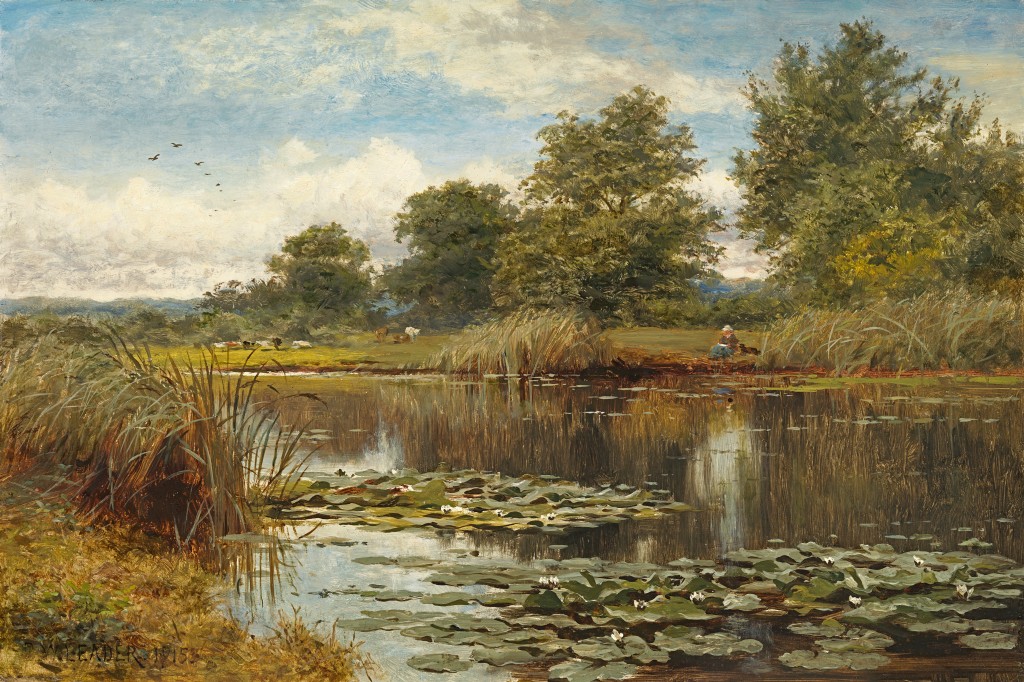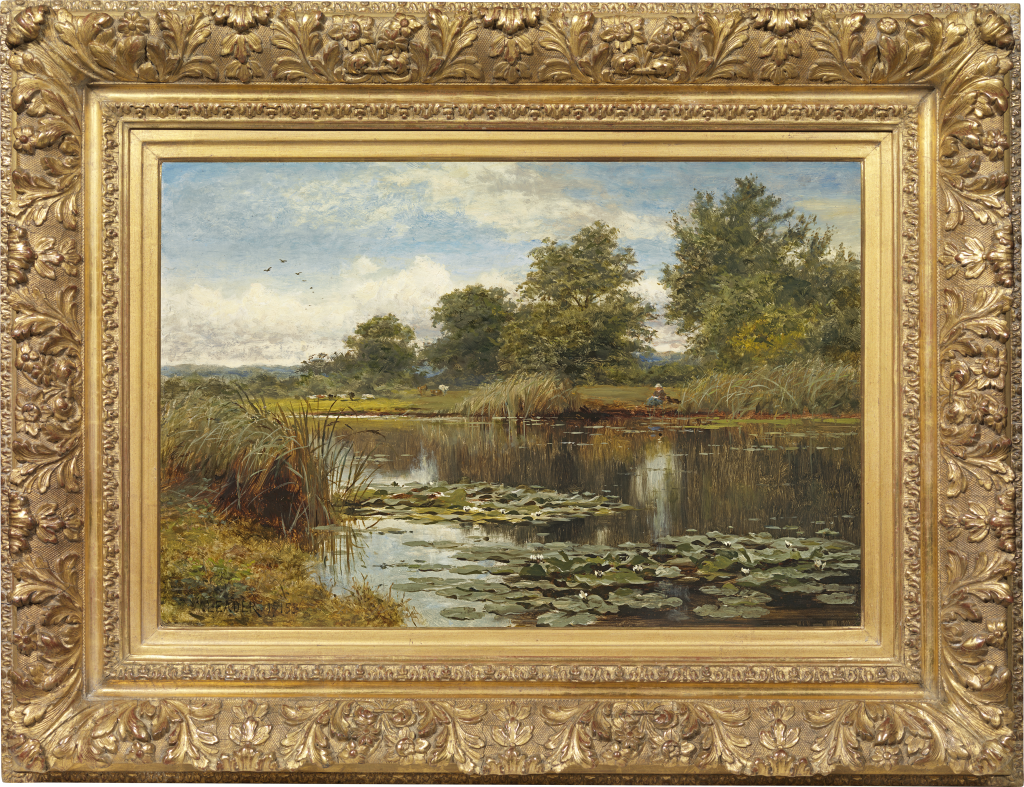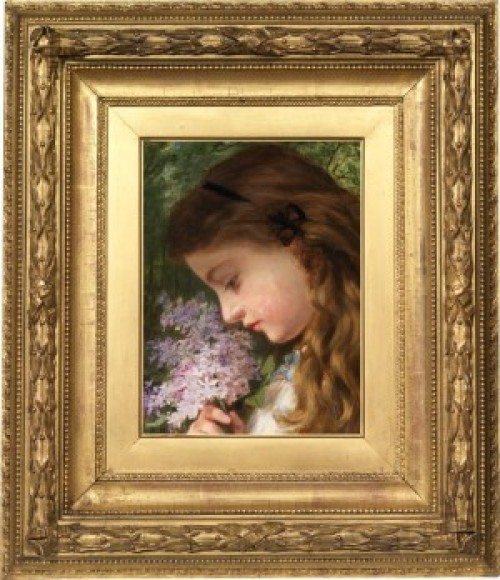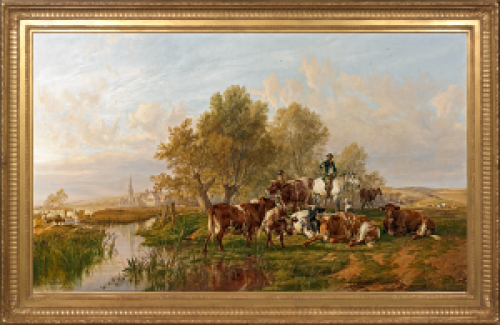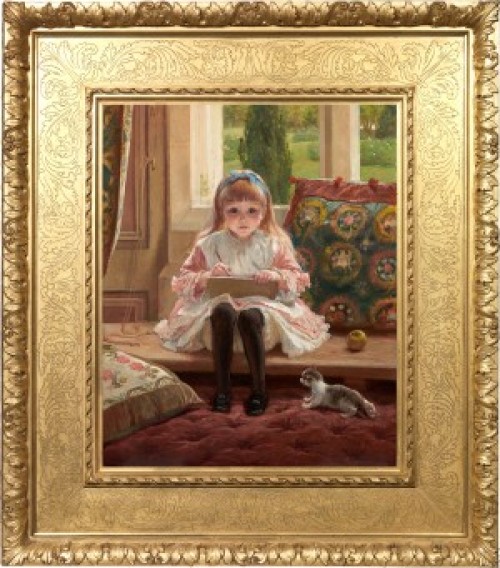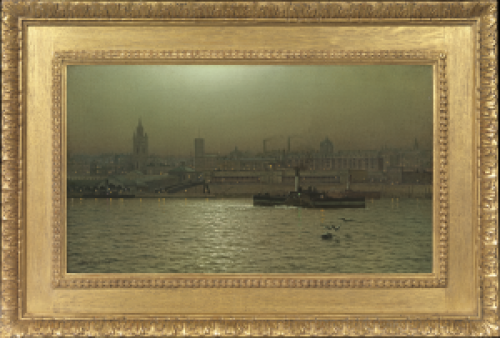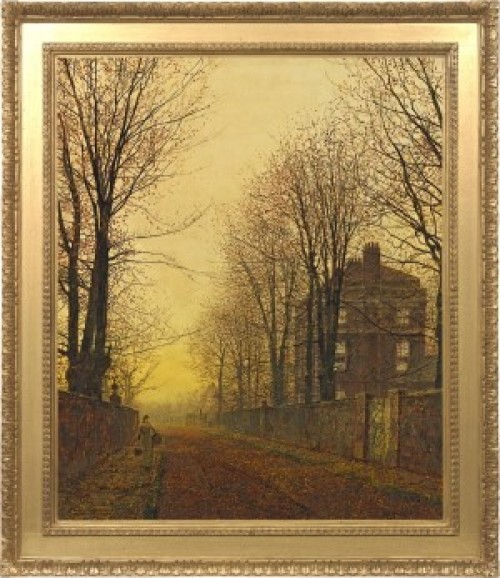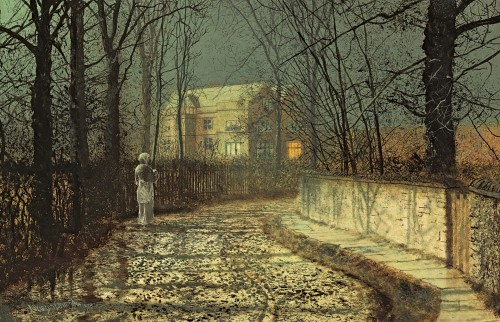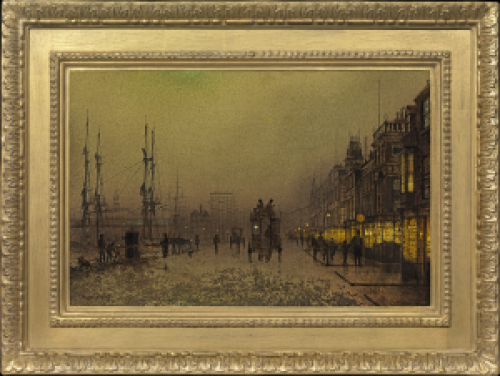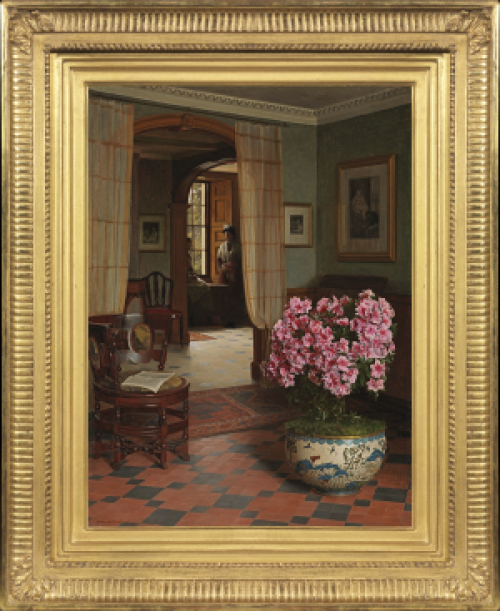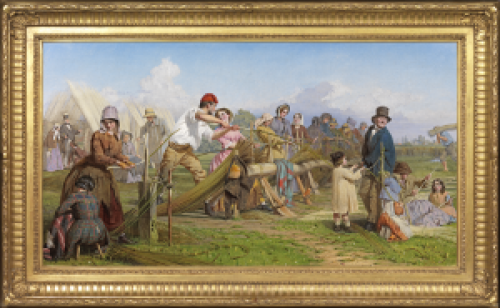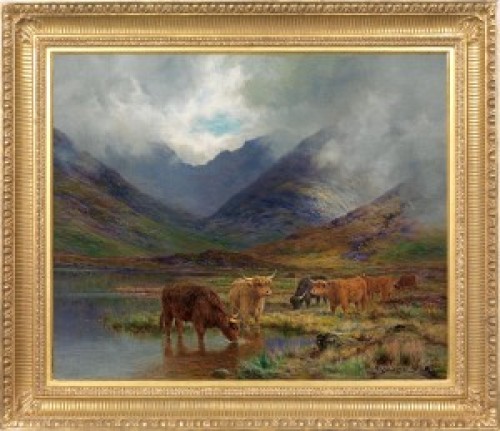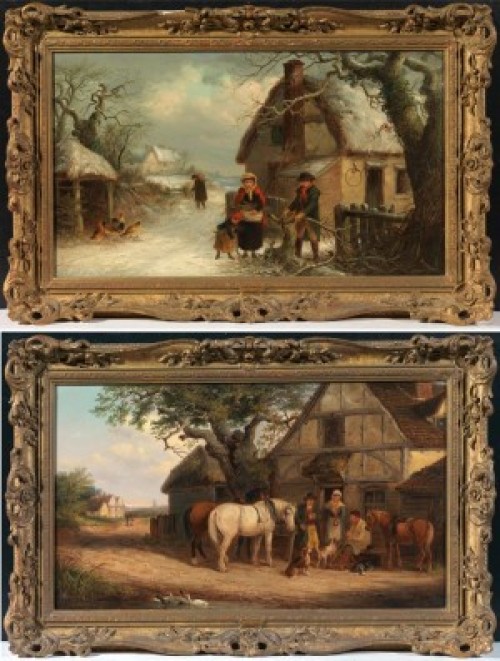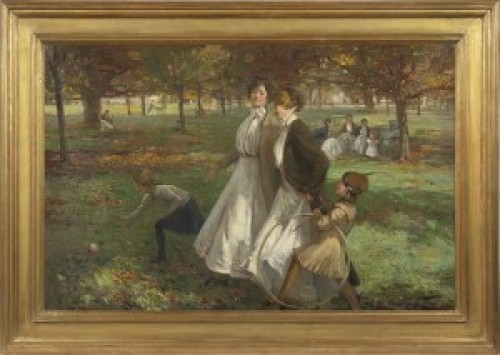BENJAMIN WILLIAMS LEADER RA
Worcester 1831 - 1923 Shere, Surrey
Ref: BZ 191
Water lilies
Signed and dated lower left: B.W. LEADER 1915; signed and inscribed on the reverse of the frame: No.4 Water Lilies / B.W. Leader
Oil on panel: 16 x 24 in / 40.6 x 61 cm
Frame size: 26 ½ x 34 ½ in / 67.3 x 87.6 cm
Provenance:
Henry J Mullen, Harrogate
Wargrave Manor, Berks
Knight, Frank & Rutley, 15th June 1966, lot 500;
private collection
Exhibited:
London, Royal Academy of Arts, Summer Exhibition, 3rd May-14th August 1915, no.454
Literature:
Frank Lewis, Benjamin Williams Leader, R.A., 1831-1923, F. Lewis Publishers Limited, Leigh-on-Sea, 1971, p.55. no.662
Ruth Wood, Benjamin Williams Leader RA, 1831-1923: His Life and Paintings, Antique Collectors’ Club, Woodbridge, 1998, p.131
Born as Benjamin Williams, he added the surname Leader, his father's middle name, to distinguish himself from the Williams family. Upon abandoning a profession in engineering for art, he became a pupil at the Royal Academy in 1853. The following year he showed his first picture there, and continued to exhibit prolifically up until his death in 1923. He achieved notable success with his painting, February Fill Dyke exhibited in 1881. It
remains one of the most famous Victorian paintings, and is a tribute to Leader's artistic talents. The Royal Academy elected him an associate in 1883, and academician in 1898. He also exhibited abroad, winning the gold medal and the legion of honour in Paris in 1889.
Leader was extremely popular in Victorian times and his work sold for high prices. Today he is recognized as one of the most accomplished Victorian landscape artists of his day. He usually chose scenes from the Midlands and the Thames valley, although he was also partial to Welsh landscapes, especially around Bettws-y-Coed. His earlier work reflects his admiration of the Pre-Raphaelites, however, he later developed a broader, more naturalistic style. A realistic feeling of space and a lightness of atmosphere are characteristic of his work. James Dafforne, the contemporary art critic of the Art Journal, praised his work in glowing terms in 1871: ‘his style is a happy medium between excess of detail and over elaboration on the one hand, and a dash of execution on the other...we regard Mr. Leader as one of our best landscape painters.’
The work of Benjamin Williams Leader is represented in the Aberdeen Art Gallery and Museum, the Birmingham City Art Gallery, the Blackburn Museum and Art Gallery, the Towneley Hall Art Gallery, Burnley, the Bristol City Art Gallery, the Ferens Art Gallery, Kingston-upon-Hull, the Guildhall Art Gallery, the Royal Academy of Arts, the Tate Gallery and the Victoria and Albert Museum, London, the Manchester City Art Gallery, the Mappin Art Gallery, Sheffield, the Atkinson Art Gallery, Southport, the Royal Holloway and Bedford New College collection, Surrey and the Worcester City Art Gallery.


